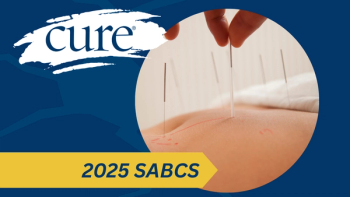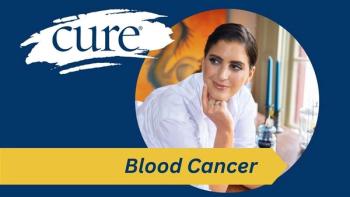
The Need for Targeted Clinical Trials in ALL
There is a need for more targeted clinical trials for patients with ALL, since many of them have Philadelphia chromosome (Ph)-like acute lymphoblastic leukemia.
Philadelphia chromosome (Ph)-like acute lymphoblastic leukemia (ALL) accounts for more than 20 percent of all adult patients with ALL and is correlated with poor outcomes, according to a study in the Journal of Clinical Oncology.
The study evaluated the prevalence and genomic landscape of Ph-like ALL in this patient population with the intention of driving future clinical trials toward common targetable rearrangements in this subgroup.
“It’s basic genomic research but it has enormous translational implications,” said Charles Mullighan, M.D., M.B.B.S., a corresponding author of the report, in an interview with CURE. “If one can identify these patients, they are excellent candidates for the addition of tyrosine kinase inhibitor (TKI) therapy.”
Researchers examined samples from 798 patients with B-cell ALL between the ages of 21 and 86. Gene-expression profiling was performed on the samples and patients were classified according to a coefficient (0-1) based on analysis of a 15-gene quantitative reverse transcriptase polymerase chain reaction low-density array. Patients with a coefficient of 0.5 to 1 were classified as having Ph-like ALL. In the study, 194 patients (24.3 percent) were found to have Ph-like ALL.
BCR-ABL1—rearranged ALL was identified in 23.2 percent of the patients and MLL-rearranged ALL was identifed in 15.4 percent.
The patient population was divided into three groups based on age: young adult patients (aged 21-39; 344 patients), adult patients (aged 40-59; 304 patients), and older adult patients (aged 60-861; 150 patients). The prevalence of Ph-like ALL was greatest among young adult patients at 27.9 percent. Adult patients had a frequency of Ph-like ALL of 20.4 percent and older adult patients, 24 percent.
Patients with non—Ph-like ALL had better survival rates than patients with Ph-like ALL with a five-year event-free survival (EFS) rate of 49.3 percent versus 22.5. The five-year overall survival (OS) rate for patients with non– Ph-like ALL was 52.4 percent versus 28.8 percent.
Survival disparities between patients with Ph-like ALL and non—Ph-like ALL were increased in younger patients. The five-year EFS rate for young adult patients with Ph-like ALL was 24.1 percent versus 60.5 percent. For adult patients with Ph-like ALL the five-year EFS was 21.4 percent versus 38.7 percent for non– Ph-like ALL. Five-year OS for young adults with Ph-like ALL was 25.4 percent versus 64.2 percent. OS for adult patients with Ph-like ALL was 27 percent versus 44.9 percent.
The survival differences for older adult patients with Ph-like ALL were lower than older adults with non—Ph-like ALL, but these differences were not statistically significant. Older adult patients with Ph-like ALL had a three-year EFS of 8 percent and a three-year OS of 13.5 percent versus 33.3 percent and 37.9 percent, respectively, for older adult patients with non–Ph-like ALL. The authors noted that the smaller group of older adult patients could have affected the significance of these findings.
Ph-positive ALL has been studied in depth in pediatric and adult patients, as this well-known subtype was associated with a poor outcome. However, the rate of Ph-like ALL—which Mullighan notes has a similar gene expression profile to Ph-positive ALL but lacks BCR-ABL1—in older patients was previously unknown.
“It had been known for many years that the frequency of Ph-positive leukemia, BCR-ABL—positive ALL, rises with increasing age. There are some data suggesting that the frequency of Ph-like ALL may not continually increase throughout age, so we were very interested in doing a comprehensive study with a large number of patients to define the prevalence of Ph-like ALL across the age spectrum of adulthood, and also to identify the underlying genetic lesions and see how they compare to those we had described in children and young adults,” said Mullighan, co-leader of the Hematological Malignancies Program at St. Jude Children’s Research Hospital.
The prevalence of Ph-like ALL across various age groups and the association with a worse outcome stimulates the need for more clinical trials to study ways to treat this subpopulation. To that end, the researchers explored the genetic landscape of adult patients with Ph-like ALL to find mutations and pathways that could be targeted with available therapies.
Of the 194 patients with Ph-like ALL in the study, genomic alterations activating kinase signaling were identified in 171 patients (88.1 percent). Of these, 99 patients (51 percent) had high expression of CRLF2, 25 of which also had a mutation of Janus kinases (JAK1/JAK2). The frequency of CRLF2 overexpression was highest among older adult patients at 58.4 percent compared with 51.1 percent in young adults and 46.8 percent in adult patients.
Alterations in kinase-activating genes identified included ABL class fusions in 9.8 percent of patients, that have not been recognized in B-cell ALL disease before: FIP1L1- PDGFRA, SNX29-PDGFRB, SMU1-JAK2, ZNF340-JAK2, THADA- EPOR, SMARCA4-TYK2, ZNF340-TYK2, ZYMM2-FLT3, DNTT-BLNK, TMEM2-PTK2B and KANK1-CBL1.
Alterations in cytokine receptor genes included sequence mutations of IL74, SH2B3, JAK1 or JAK3 and rearrangement of TYK2 in 7.2 percent of patients; Ras pathway mutations of KRAS, NF1, PTPN11 and CBL1 in 3.6 percent; and uncommon fusions, including FLT3, NTRK3, BLNK and PTK2B in 4.1 percent.
Rearrangements activating kinase signaling were found in 126 patients (65 percent) including 32 different rearrangements across 14 kinase or cytokine receptor genes. Further, 11 rearrangements were identified that have not been recognized in B-cell ALL disease before: FIP1L1- PDGFRA, SNX29-PDGFRB, SMU1-JAK2, ZNF340-JAK2, THADA- EPOR, SMARCA4-TYK2, ZNF340-TYK2, ZYMM2-FLT3, DNTT-BLNK, TMEM2-PTK2B and KANK1-CBL1.
The frequency of kinase fusions did not differ greatly between age groups, except for EPOR rearrangements, which were found more often in younger adults than in older adults.
Patients with a rearrangement of CRLF2, JAK2/EPOR, or ABL class genes were more likely to have a higher coefficient used in the classification of Ph-like ALL and were associated with a worse outcome. For patients harboring CRLF2 rearrangements, 68 percent were assigned a coefficient between 0.9 and 1, on the higher end of the spectrum, and 79 percent of patients with a JAK2/EPOR rearrangement had a coefficient between 0.9 and 1. Ninety percent of patients with an ABL-associated rearrangement had a coefficient between 0.9 and 1. However, patients with CRLF2 or JAK2/EPOR rearrangements were associated with worse 5-year EFS and OS rates than patients with ABL class rearrangements.
“This study confirmed that this is a prevalent form of leukemia, with similar kinase-activating genetic alterations to those previously described, but importantly, as we continue to sequence more cases, we find more lesions that we haven’t found before,” said Mullighan. “One of our key take-home messages from this study is that accurate management really needs accurate sequencing rather than just candidate testing approaches for the most common fusions.”
In the study, the authors suggested that the identification of patients with Ph-like ALL be incorporated in the design of future clinical trials.
In terms of potential treatment options, Ph-like ALL is characterized by a variety of genetic alterations in adults, most of which can be targeted by existing therapies, the study authors noted.
“In the context of these studies, the [most] promising approach is a TKI,” said Mullighan.
The study authors note that approximately 70 percent of the patients with Ph-like ALL could benefit from treatment with JAK inhibitors, such as Jakafi (ruxolitinib). Patients harboring CRLF2 rearrangements, JAK2/ EPOR rearrangements, and sequence mutations of JAK1, JAK3, IL7R or SH2B3, could all be treated with a JAK inhibitor.
Preclinical studies have shown the efficacy of Jakafi in Ph-like ALL or early T-cell precursor ALL. In a study of patient-derived murine xenograft models of ALL treated with the JAK1/2 inhibitor Jakafi, the treatment showed activity in all 6 of the xenograft models.2
Patients harboring ABL1, ABL2, CSF1R, PDGFRA, or PDGFRB rearrangements could all benefit from being treated with ABL inhibitors, such as Gleevec (imatinib) or Sprycel (dasatinib), both of which have been approved for the treatment of patients with Ph-positive ALL.
In a previous study of Ph-like ALL, the researchers noted that cell lines and human leukemic cells in vitro expressing ABL1, ABL2, CSF1R, and PDGFRB fusions were sensitive to dasatinib.3 Previous reports of patients with other tumor types expressing an ETV6-NTRK3 fusion have shown responses to the ALK inhibitor Xalkori (crizotinib).
“There are likely other forms of therapy that could treat this form of leukemia as well that are not necessarily related to the genetics,” Mullighan said. “But in terms of how these findings directly inform therapy, the implication is for TKIs... and inhibitors of ABL and JAK2 inhibitors are the 2 main agents moving ahead in to clinical trials. There are a number of other kinases as well that require other TKIs that are less commonly mutated or rearranged but are also very likely to respond and they’ll need to be tested in future work.”
Trials assessing the addition of TKI therapy to chemotherapy have commenced, including a trial studying the combination of Jakafi or Sprycel with chemotherapy in adult patients with Ph-like ALL (





